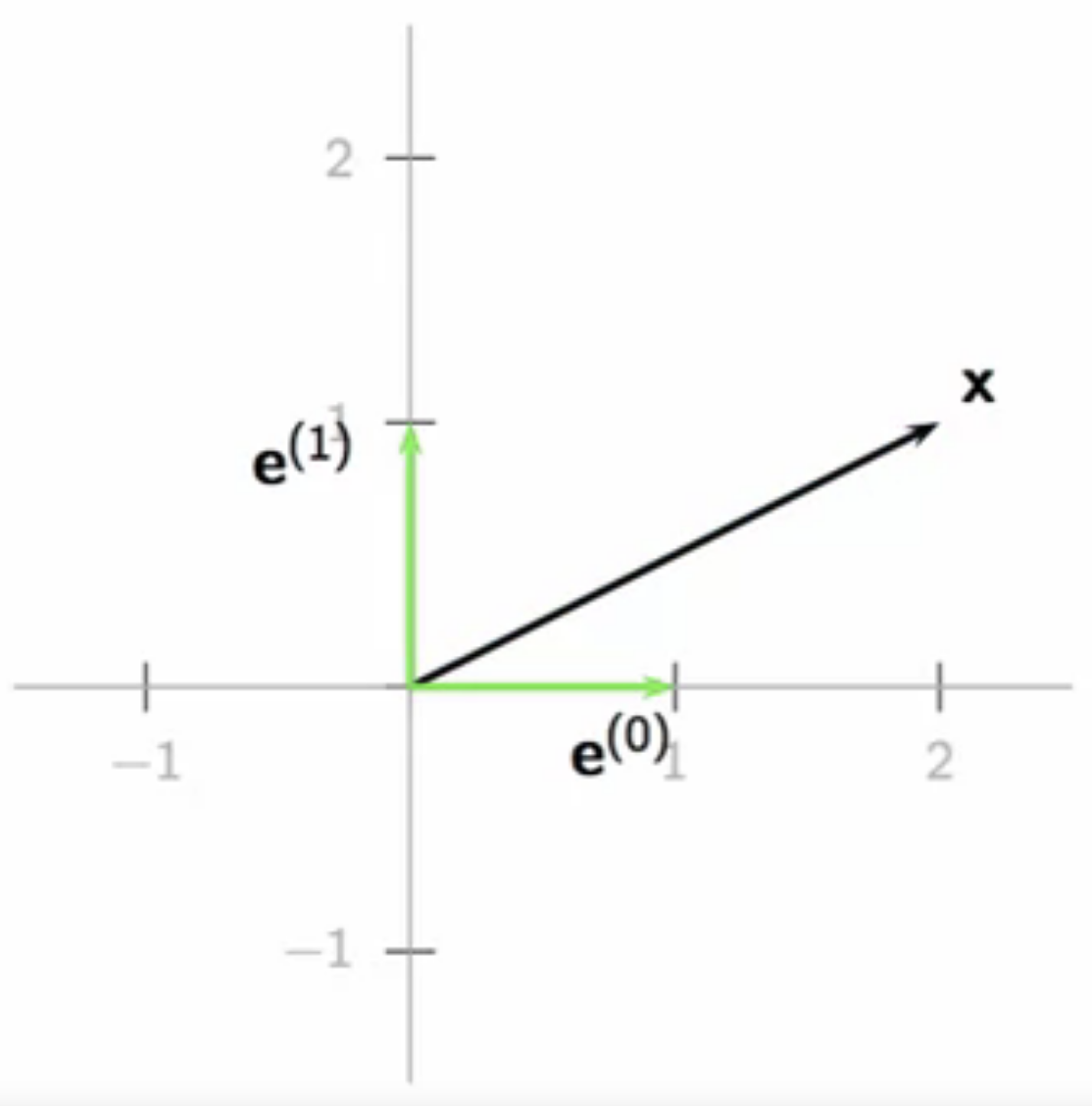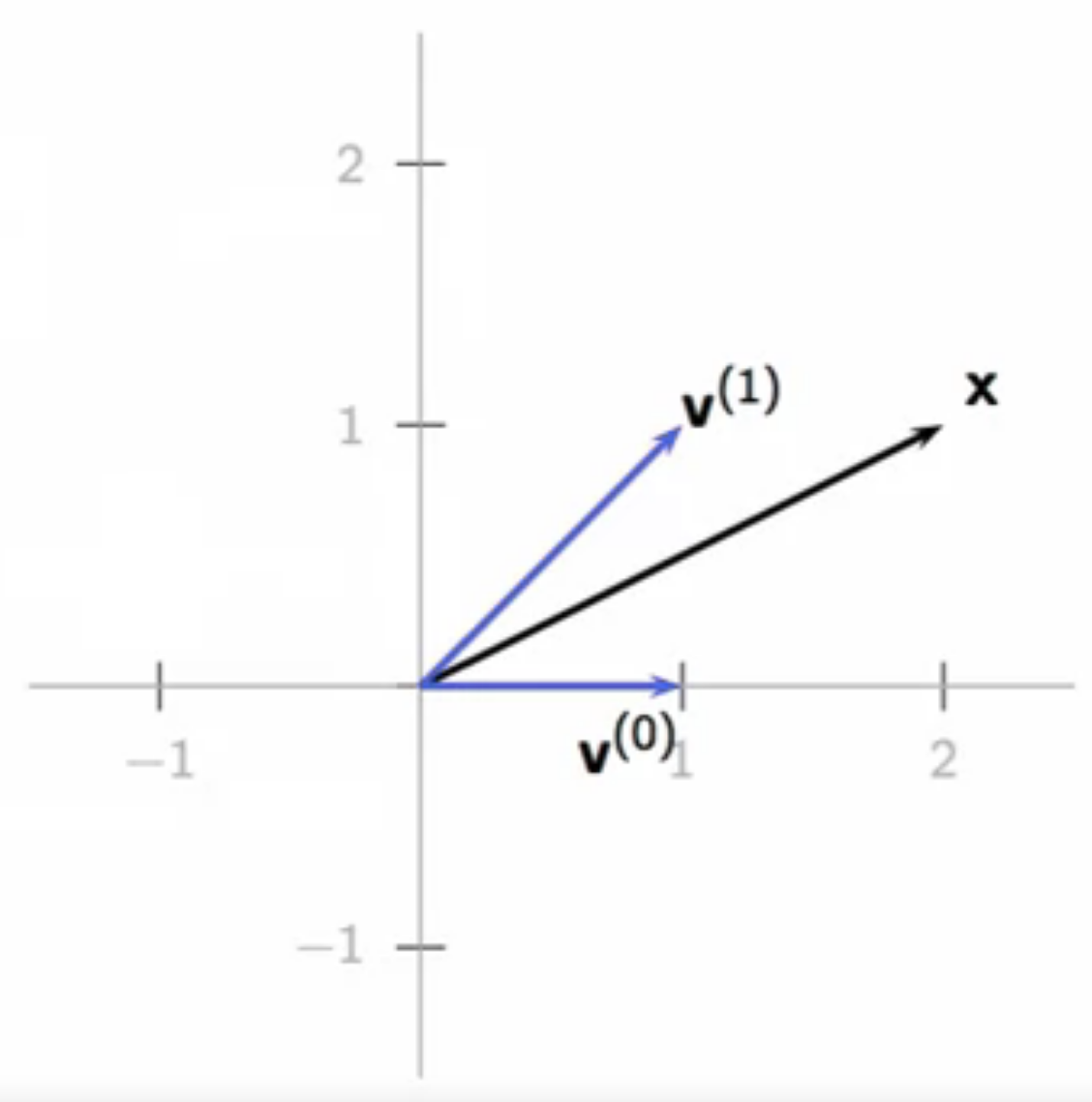[DSP] W02 - Vector Spaces
contents
discrete signal vectors
- a generic discrete signal:
- set of ordered number sequence
- four classes of signals
- finite length
- infinite length
- periodic
- finite support
- digital signal processing:
- signal analysis
- signal synthesis
- number sets:
- : natural numbers
- whole numbers
- : integers
- : rational numbers
- inclusive of recurring mantissa
- : irrational numbers
- non-repeating and non-recurring mantissa
- value,
- : real numbers (everything on the number line)
- includes rational and irrational numbers
- : complex numbers
- includes real and imaginary numbers
- : natural numbers

fig: number sets
vector space framework:
- justification for dsp application:
- common framework for various signal classes
- inclusive of continuous-time signals
- easy explanation of Fourier Transform
- easy explanation of sampling and interpolation
- useful in approximation and compression
- fundamental to communication system design
- common framework for various signal classes
- paradigms for vector space application to discrete signals
- object oriented programming
- the instantiated object can have unique property values
- but for a given object class, the properties and methods are the same
- lego
- various unit blocks, same and different
- units assembled in different ways to build different complex structures
- similarly, a complex signal is broken down into a combination of basis vectors for analysis
- object oriented programming
- key takeaways
- vector spaces are general objects
- vector spaces are defined by their properties
- once signal properties satisfy vector space conditions
- vector space tools can be applied to signals
vector spaces
- some vector spaces
- : 2D space
- : 3D space
- : N real numbers
- : N complex numbers
- :
- square-summable infinite sequences
- :
- square-integrable functions over interval
- vector spaces can be diverse
- some vector spaces can be represented graphically
- helps visualize the signal for analysis insights
- :
- :
- both can be visualized in a cartesian system fig: vector in 2D space
- :
- function vector space
- can be represented as sine wave along time fig: L2 function vector
- others cannot be represented graphically:
- for
- for
vector space axioms
- informally, a vector space:
- has vectors in it
- has scalars in it, like
- scalers must be able to scale vectors
- vector summation must work
- formally, (: vector space)
-
- commutative addition
-
- distributive addition
-
- distributive scalar multiplication over vectors
-
- distributive vector multiplication over scalers
-
- associative scalar multiplication
-
- null vector, , exists
- addition of and another vector returns
- summation with null vector is commutative
-
- an inverse vector exists in vector space such that adding the vector with it’s inverse yields the null vector
-
- examples:
- : vector of N real numbers
- two vectors from this space look like:
- the above mentioned rules apply to these vectors and can be verified
- two vectors from this space look like:
- : vector of N real numbers
inner product
- aka dot product: measure of similarity of two vectors
- takes two vectors and outputs a scaler which indicates how similar the two vectors are
- inner product axioms
-
- distributive over vector addition
-
- commutative with conjugation
-
- distributive with scalar multiplication
- when scalar scales the second operand
-
- distributive with scalar multiplication
- conjugate scalar if it scaling the first operand
-
- self inner product ( \in \mathbb{R})
-
- if self inner product is 0, then the vector is the null vector
- if ,
- then and are orthogonal
-
- inner product is computed differently for different vector spaces
- in vector space:
-
- where : angle between and
- when two vectors are orthogonal to each other
- , so , so
-
- in vector space:
-
- norm:
- the inner product of a symmetric and an anti-symmetric function is 0
- i.e. they are orthogonal to each other and cannot be expressed as a factor of the other in any way
- example 1:
- - anti-symmetric
- - symmetric

fig: inner product of a symmetric and an anti-symmetric function
- example 2:
-
norm and distance
- norm of a vector: - inner product of a vector with itself - square of the norm (length) of a vector -
- distance between two vectors:
- the norm of the difference of the two vectors
- the distance between orthogonal vectors is not zero
- in , norm is the distance between the vector end points
- is the difference vector
-
- connects the end points of the vectors and
- see triangle rule of vector addition, and pythagorean theorem
- in , the norm is the mean-squared error:
signal spaces
completeness
- consider an infinite sequence of vectors in a vector space
- if it converges to a limit within the vector space
- then said vector space is “complete”
- also called Hilbert Space
- limiting operation is ambiguous, definition varies from one space to the other
- so some limiting operation may fail and point outside the vector space
- such vector spaces are not said to be complete
common signal spaces
- while vectors spaces can be applied to signal processing
- not all vector spaces can be used for all signals
- different signal classes are managed in different spaces
- : vector space of N complex tuples
- valid signal space for finite length signals
- vector notation:
- where are complex tuples
- also valid for periodic signals
- vector notation:
- all operations are well defined and intuitive
- inner product:
- well defined for all finite-length vectors in ( \mathbb{C}^N)
- valid signal space for finite length signals
- the inner product for infinite length signals explode in - inappropriate for infinite length signal analysis
- : vector space of square-summable sequences - requirement for sequences to be square-summable: - - sum of squares of elements of the sequence is less than infinity - all sequences that live in this space must have finite energy - “well-behaved” infinite-length signals live in - vector notation:
- lot of other interesting infinite length signals do not live in
- examples:
- these have to be dealt with case-by-case
- examples:
basis
- a basis is a building block of a vector space
- a vector space usually has a few basis vectors called bases
- like the lego unit blocks
- any element in a vector space can be
- built with a combination of these bases
- decomposed into a linear combination of these bases
- the basis of a space is a family of vectors which are least like each other
- but they all belong to the same space
- as a linear combination, the basis vectors capture all the information within their vector space
- fourier transform is simply a change of basis
vector families
- : family of vectors - : index of the basis in the family
- canonical basis:
- this family of basis vectors is denoted by
- any vector can be expressed as a linear combination of ( \textbf{e}^k) in ( \mathbb{R}^2 )
- graphical example:

fig: linear combination of canonical ( \textbf{e}^k) in (\mathbb{R}^2)
- non-canonical basis example:
- any vector can be expressed as a linear combination of these vectors in
- the coefficients of the bases will be different compared to the canonical bases
- graphical example:
-
- by rule of parallelogram vector addition

fig: linear combination of non-canonical in
- only vectors which are linearly independent can be the basis vectors of a space
- infinite dimensional spaces bases:
- some limitations have to be applied to obtain basis vectors of infinite dimension
- a canonical basis of - , -th position,
- function vector spaces:
- basis vector for functions:
- the fourier basis for functions over an interval : - - any square-integrable function in can be represented as a linear combination of fourier bases - a square wave can be expressed as a sum of sines
- formally, in a vector space ,
- a set of vectors from , is a basis for if:
`
- : ,
- the coefficients are unique
- this implies linear independence in the vector basis
- `
orthonormal basis
- the orthogonal bases are the most important
- of all possible bases for a vector space
- orthogonal basis: for
- vectors of an orthogonal basis are mutually orthogonal
- their inner product with each other is zero
- in some spaces, the orthogonal bases are also orthonormal
- i.e. they are unit norm
- their length
- the inner product of any two vectors in the orthonormal bases is the difference between their indices
- gran-schmidt algorithm can be used to orthonormalize any orthogonal bases
- obtaining the bases coefficients for bases can be involved and challenging
-
- : a vector as the linear combination of basis vectors ,
- with corresponding coefficients
- however, they are easy to obtain with an orthonormal basis
-
change of basis
-
- is the target basis, is the original basis
- if is orthonormal:
- this forms the core of the discrete fourier transform algorithm for finite length signals
- can be applied to elementary rotations of basis vectors in the euclidean plane
- the same vector has different coefficients in the original and the rotates bases
- the rotation matrix is obtained by the matrix multiplication of the original and the target bases
- the rotation matrix applied to a vector in the original bases yields the coefficients of the same vector in the rotated bases
- the matrix multiplication of the rotation matrix with its inverse yields the identity matrix
subspaces
- subspaces can be applied to signal approximation and compression
- with vector and subspace
- approximate with by
- take projection of the vector in on
- due to the adaptation of vector space paradigm for signal processing
- this geometric intuition for approximation can be extended to arbitrarily complex vector spaces
vector subspace
- a subspace is a subset of vectors of a vector space closed under addition and scalar multiplication
- classic example:
- in-plane vector addition and scalar multiplication operations do not result in vectors outside the plane
- uses only 2 of the 3 orthonormal basis of
- the subspace concept can be extended to other vector spaces
- : function vector space
- subspace: set of symmetric functions in
- when two symmetric functions are added, they yield symmetric functions
- : function vector space
- subspaces have their own bases
- a subset of their parent space’s bases
least square approximations
- orthonormal basis for
- orthogonal projection:
- the orthogonal projection: the “best” approximation of over - because of two of its properties - it has minimum-norm error: - - orthogonal projection minimizes the error between the original vector and the approximated vector - this error is orthogonal to the approximation: - - the error and the basis vectors of the subspace are maximally different - they are uncorrelated - the basis vectors cannot capture any more information in the error
- example: polynomial approximation
- approximating from vector space to
- i.e. vector space of square-integrable functions to a subspace of polynomials of degree
- generic element of subspace has form
- a naive, self-evident basis for this subspace:
- not orthonormal, however
approximation with Legendre polynomials
- example goal:
- approximate to
- : polynomials of the degree 2
- approximate to
- build orthonormal basis from naive basis
- use Gram-Schmidt orthonormalization procedure for naive bases:
- : original naive bases
- : orthonormalized naive bases
- this algorithm takes one vector at a time from the original step and incrementally produces an orthonormal set
-
- for the first naive basis vector, normalize it with 1
- project the second naive basis vector on to the normalized first basis
- then subtract this projection from the second basis vector to get the second normalized basis
- this removes the the first normalized basis’s component from the second naive basis
-
- normalize the extracted vector
-
- this process yields:
- and so on
- these are known as Legendre polynomials
- they can be computed to the arbitrary degree,
- for this example, up to degree 2
- use Gram-Schmidt orthonormalization procedure for naive bases:
- project over the orthonormal basis
- simply dot product the original vector over all the legendre polynomials i.e. the orthogonal basis of the subspace
-
- compute approximation error
- so using the orthogonal projection
- this subspace has only one non-zero basis:
- so using the orthogonal projection
- compare error to taylor’s expansion approximation
- well known expansion, easy to compute but not optimal over interval
- taylor’s approximation:
- in both cases, the approximation is a straight line, but the slopes are slightly different ( 10% off)
- the taylor’s expansion is a local approximation around 0,
- the legendre polynomials method minimizes the global mean-squared-error between the approximation and the original vector
- the error of the legendre method has a higher error around 0
- however, the energy of the error compared to the error of the taylor’s expansion is lower in the interval
- error norm:
- legendre polynomial based approximation:
- taylor series based approximation:
- legendre polynomial based approximation:
haar spaces
- haar spaces are matrix spaces
- note: matrices can be reshaped for vector operations
- encodes matrix information in a hierarchical way
- finds application in image compression and transmission
- it has two kinds of basis matrices
- the first one encodes the broad information
- the rest encode the details, which get finer by the basis index
- each basis matrix has positive and negative values in some symmetric pattern
- the basis matrix will implicitly compute the difference between image areas
- low-index basis matrices take differences between large areas
- high-index matrices take differences in smaller, localized areas
- this is a more robust way of encoding images for transmission methods prone to losses on the way
- if images are transmitted as simple matrices, they are prone to being chopped is loss in communication occurs during transmission
- haar encoding transmits coefficients not pixel by pixel but hierarchically in the level of detail
- so if communication loss occurs, the broad idea of the image is still conveyed
- while continued transmission will push up the detail level
- approximation of matrices to harr space is an example of progressive encoding